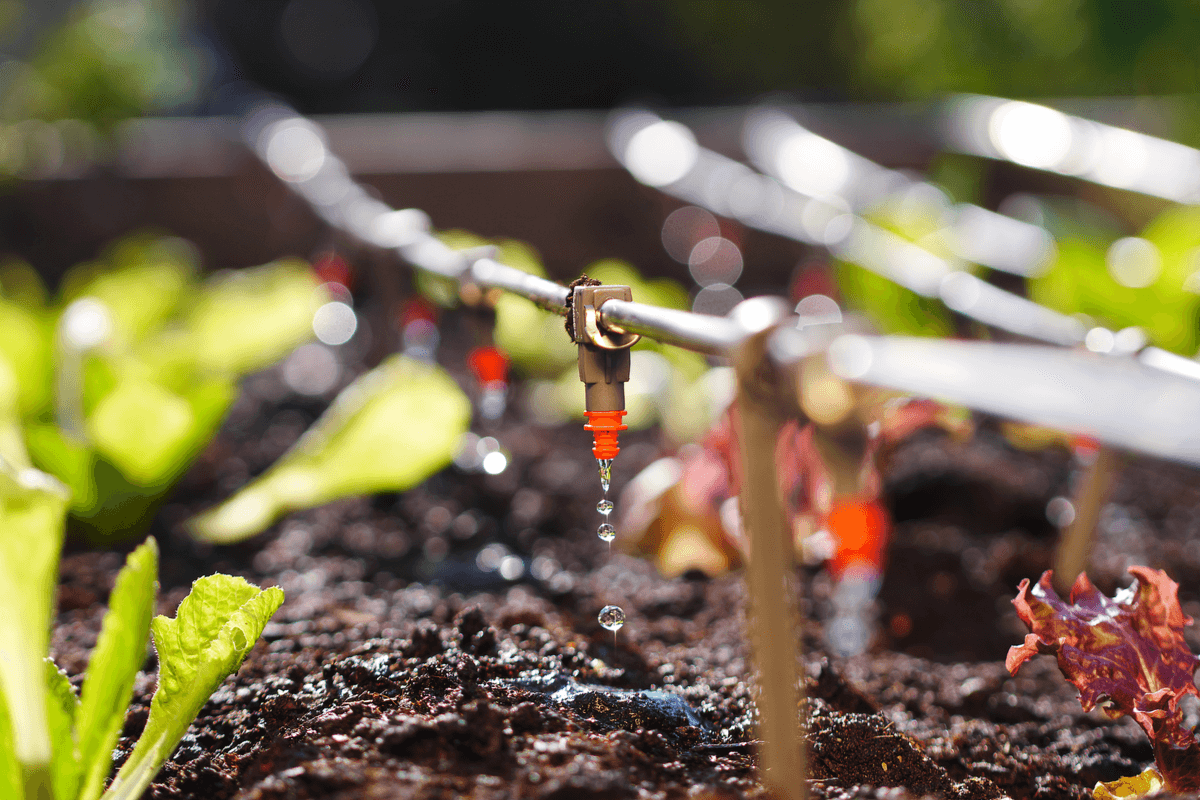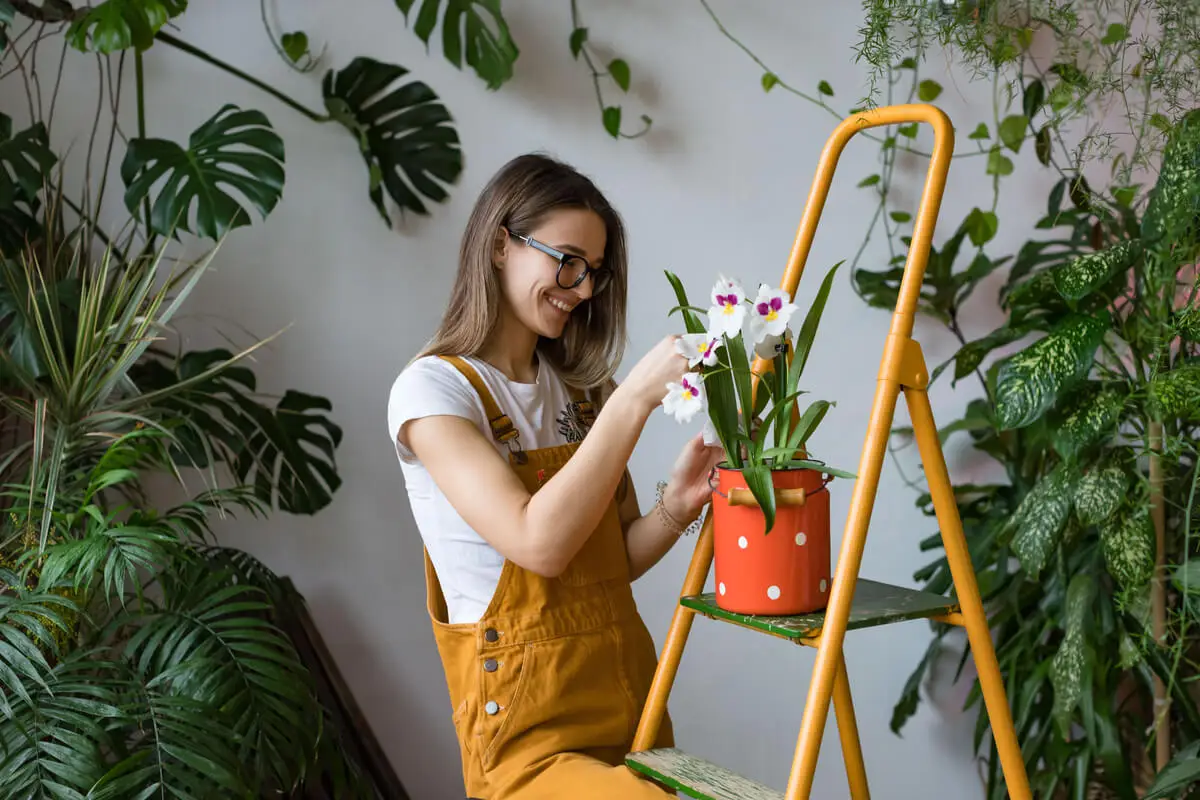What You Need to Know for Orchid Cultivation

Orchids are elegant and sophisticated plants that are easy to care for and easy to keep indoors. However, they’re not the same as just any other plant. Different types require certain specific care. Therefore, orchid cultivation is an easy task if some conditions are respected.
An orchid is a plant that brings aesthetics, elegance, and a share of green landscape to the home. That’s why many people choose orchids as a decorative element.
Although it’s an ideal variety for this purpose, orchids should not be left uncared for, as they can dry out or contract diseases. In addition, it’s a good idea to know what specific type of orchid you have in order to apply specific treatments.
Tips for the orchid cultivation
This is a simple plant to care for, but it’s also delicate. This implies that orchid cultivation requires attention to watering, indirect sunlight, and constant humidity.
Space and lighting for orchid cultivation
In general, these flowers need areas of the home where sunlight reaches them indirectly. Care should be taken not to leave them in direct contact with the sun, however, as they may dry out and not bloom. In any case, it depends on the type of orchid you have. Choosing a corner or a corner with sufficient lighting but without sunlight is ideal.
If you don’t have a sector in the home that has these characteristics, you can resort to artificial lighting. To do this, just place fluorescent bulbs and keep them 20 centimeters away from them for an average of 15 hours a day.
We think you may also enjoy reading this article: How to Use Neem Oil to Look After Your Garden Plants
Orchid cultivation: Watering
Regarding water, the cultivation of orchids involves special care. Ordinary tap water may be too heavy for their roots, so getting liquid low in minerals is recommended. It’s also important to keep the humidity in the soil constant but without any excesses.
On the other hand, it’s recommended to carry out the watering action with an atomizer. Abundant and spaced irrigations are ideal for these plants, with the precaution of generating good drainage.

Cut the flowers
The stems should be cut in cases where the orchid isn’t blooming anymore or when no regrowth is visible. It’s enough to tear off 1 centimeter of it; however, always do this very carefully. It’s advisable to perform this task for the cultivation of orchids before the stem turns yellow.
Orchid cultivation: Temperature
One of the most important aspects for the care of orchids is the temperature. Keep in mind that they don’t tolerate too much cold.
They’re plants that need a temperate climate, with temperatures ranging between 10 and 30 degrees Celsius. In addition, it’s important to maintain humidity. In the case of living in dry areas, you can place stones with water or a humidifier.
Fertilizer
For the correct cultivation of orchids, it’s necessary to stir and add fertilizer every few months. Getting the necessary product is simple: all you have to do is go to a specialized store and ask for it.
It may be packed in a bag or sachet, but it must contain the vitamins and nutrients necessary for the healthy growth of the plant. The most important are nitrogen, potassium, and phosphorus.
Orchid cultivation: Air
It’s healthy for plants of this type to receive certain air currents. Therefore, they can be placed near a window or in a space in the home where the wind circulates. However, it should not be a very strong current.
A proper container
Orchids grow in the trunks and bark of trees. Therefore, as they don’t naturally receive natural light, they also produce photosynthesis in their roots.
This means that, in their indoor care, they should not be placed in pots that block the light, as their bases also need it. It’s best to use transparent containers that allow contact with the light.
Orchid cultivation: Transplanting
Transplanting orchids suggests, first of all, that they’ve received sufficient care for their growth. In this case, it’s recommended to change their bases every 2 years.
The best time to do it is when they start to grow after flowering. In this way, new flowers are created that are rich in nutrients.
Orchidaceae characteristics
Orchids are a large family of plants composed of thousands of species, with the common characteristic of producing flowers of various colors. They often bloom at the same time for several weeks, and can be yellow, red, green, white or brown.
Orchids are native to tropical environments, such as rainforests or river valleys, so they require care that simulates these conditions. If you have several specimens, keeping them together generates a higher percentage of humidity.
They usually grow in environments with high temperatures and almost always on tree trunks. They therefore belong to very humid spaces and need indirect lighting.

Like this article? You may also like to read: How to Use Recycled Glass Bottles to Decorate your Garden
How to recognize problems in orchid cultivation
Finally, it’s important to identify errors in the care of plants in order to solve them in time. For example, if the orchid doesn’t bloom or its leaves are dark and yellowish, it’s because it lacks light. Meanwhile, if there’s an excess of illumination, it’s common that it dries out, and spots or burns may appear on the leaves.
On the other hand, orchids should be kept in well-ventilated areas. If they don’t have enough air, they’re likely to develop fungus or other diseases. If the flowers last less than 12 weeks, it may mean that the plant lacks heat or watering.
If the care is effective, it’s possible that the plants of this species grow about 60 or even 70 centimeters in height. In addition, their typical flowers will remain for most of the time, thanks to their hardiness.
All cited sources were thoroughly reviewed by our team to ensure their quality, reliability, currency, and validity. The bibliography of this article was considered reliable and of academic or scientific accuracy.
- Garcia, Rebeca. “Manual Para La Propagación de Orquídeas.” Comision Nacional Forestal 1.Micropropagación de orquídeas (2011): 30–38. Disponible en: http://www.conafor.gob.mx/biblioteca/documentos/MANUAL_PARA_LA_PROPAGACION_DE_ORQUIDEAS.PDF
- Trujillo, Delsy , DIVERSIDAD DE ORQUÍDEAS DE LAS DIFERENTES FORMACIONES VEGETALES DE LOS ANDES PERUANOS. Lankesteriana International Journal on Orchidology [Internet]. 2013;13(1-2):103-111. Recuperado de: https://www.redalyc.org/articulo.oa?id=44340043011
- Garcia, Eliana Maria. Orquídeas. Universidade de São Paulo. Escola Superior de Agricultura Luiz de Queiroz, 2017. Orquídeas. Web. Disponible en: https://doi.org/10.11606/9788598316161
- González-Razo, Felipe de Jesús , Morales-Hernández, José Luis , Pérez-Chávez, Manuel Antonio , CARACTERIZACION DE LAS ORQUÍDEAS EPÍFITAS Y SUS FOROFITOS EN EL PARQUE ECOLÓGICO UNIVERSITARIO “JOSÉ MARIANO MOCIÑO” DE LA UNIVERSIDAD AUTÓNOMA DEL ESTADO DE MÉXICO. Polibotánica [Internet]. 2016; (42):103-119. Recuperado de: https://www.redalyc.org/articulo.oa?id=62146619005
- Wiese, Klaus W. , RIQUEZA DE LA FAMILIA ORCHIDACEAE EN LA ZONA DE VISITANTES DEL PARQUE NACIONAL CERRO AZUL MEÁMBAR DE HONDURAS. Lankesteriana International Journal on Orchidology [Internet]. 2015;15(3):203-210. Recuperado de: https://www.redalyc.org/articulo.oa?id=44343538004
This text is provided for informational purposes only and does not replace consultation with a professional. If in doubt, consult your specialist.








